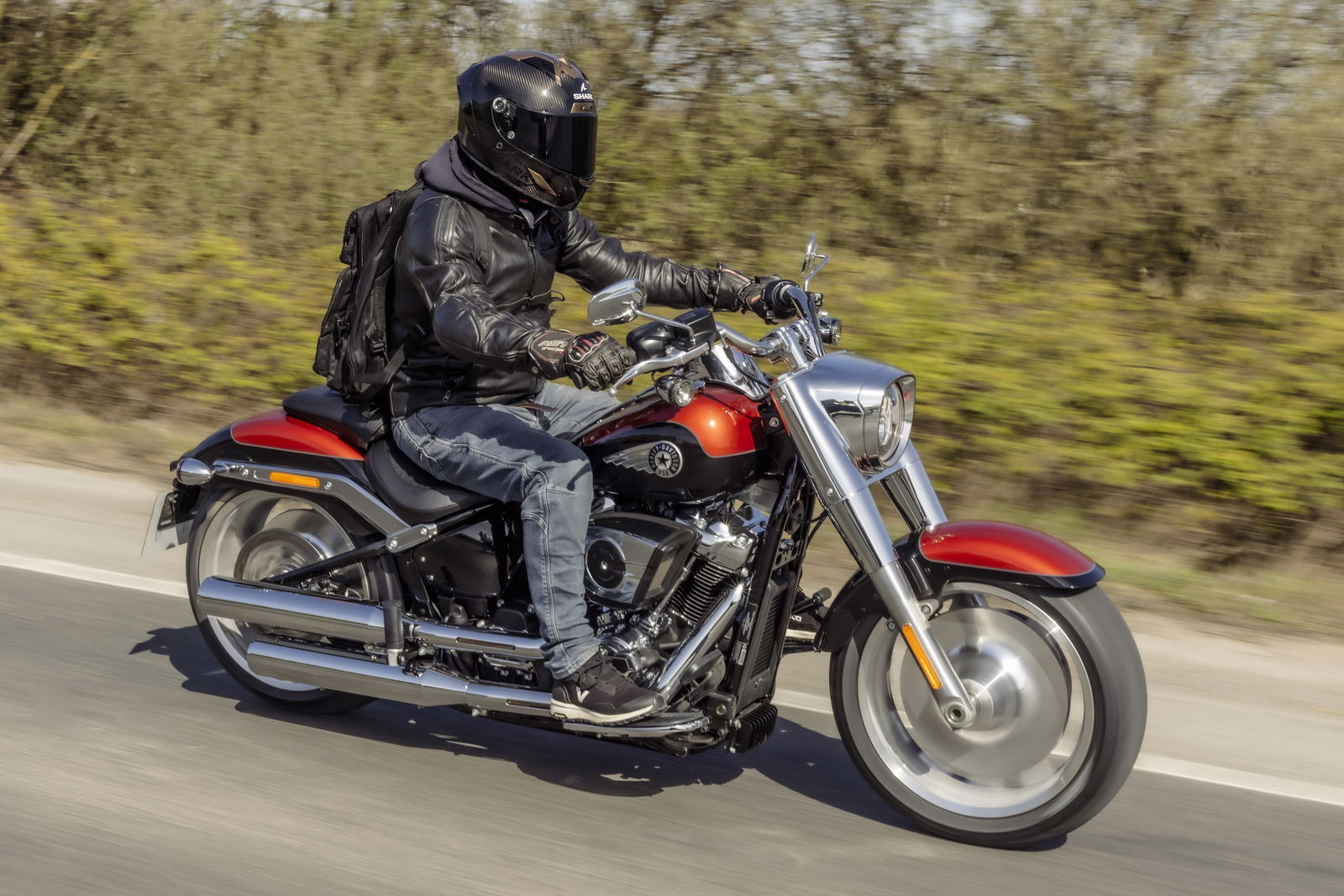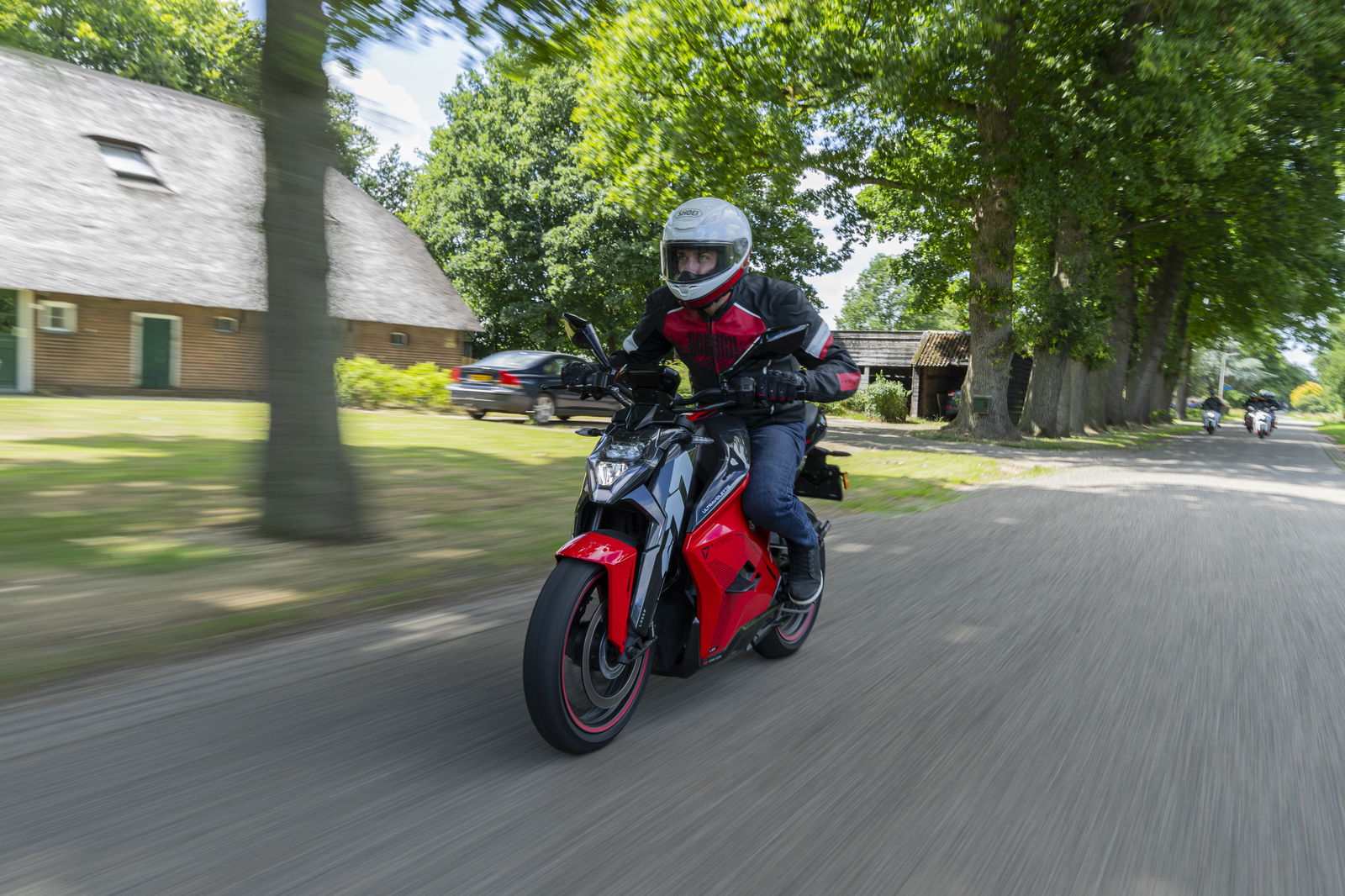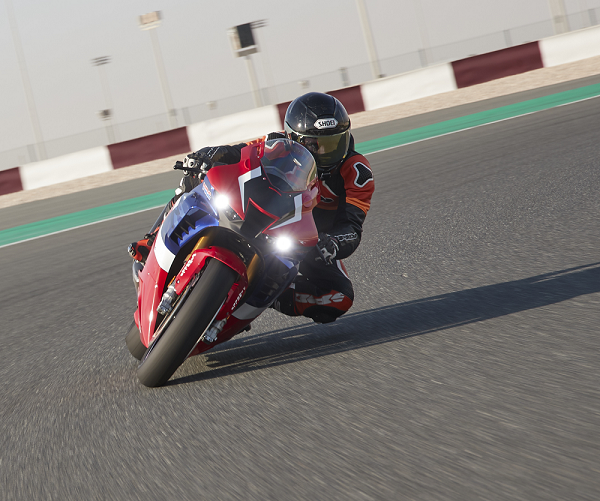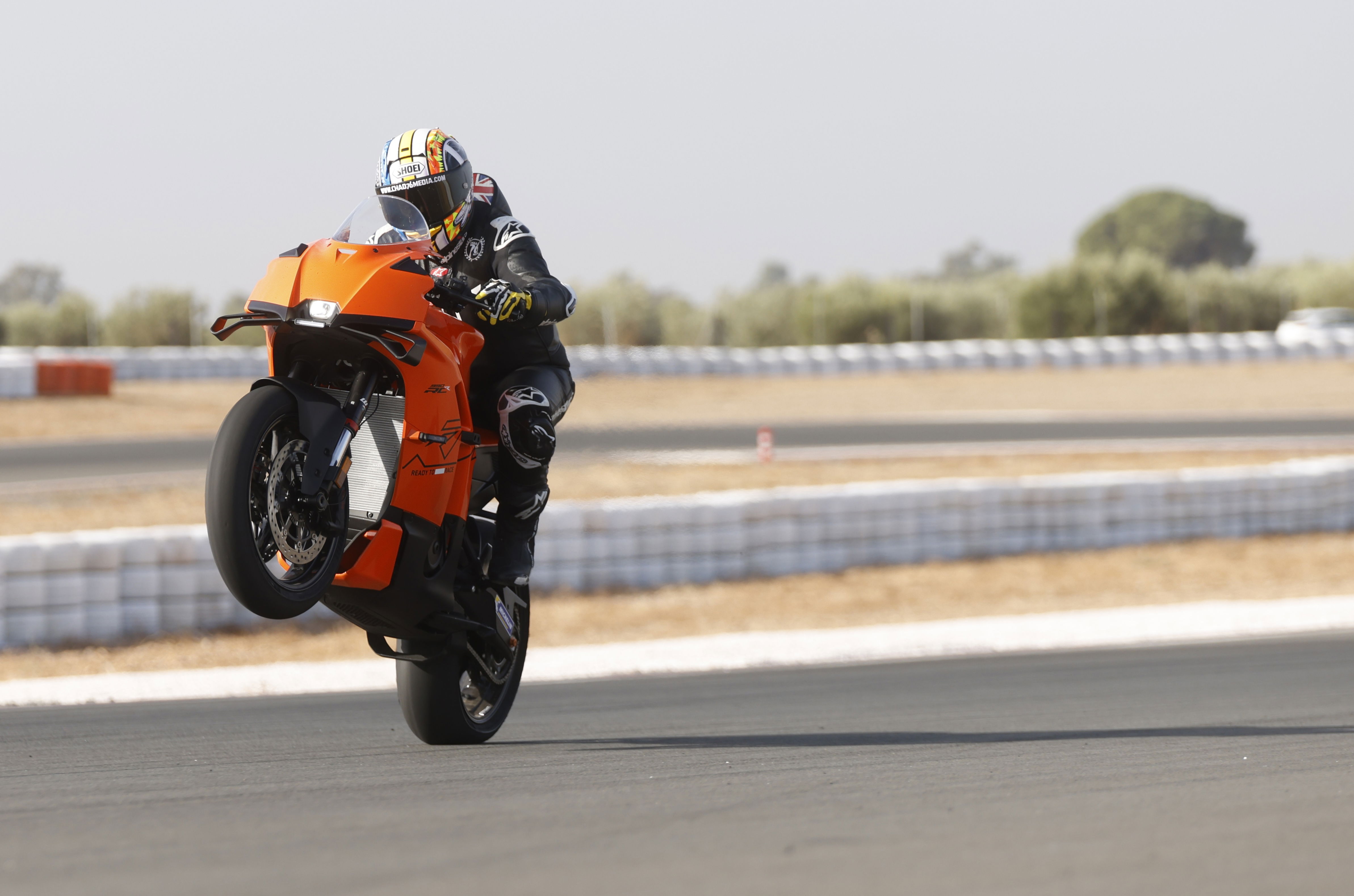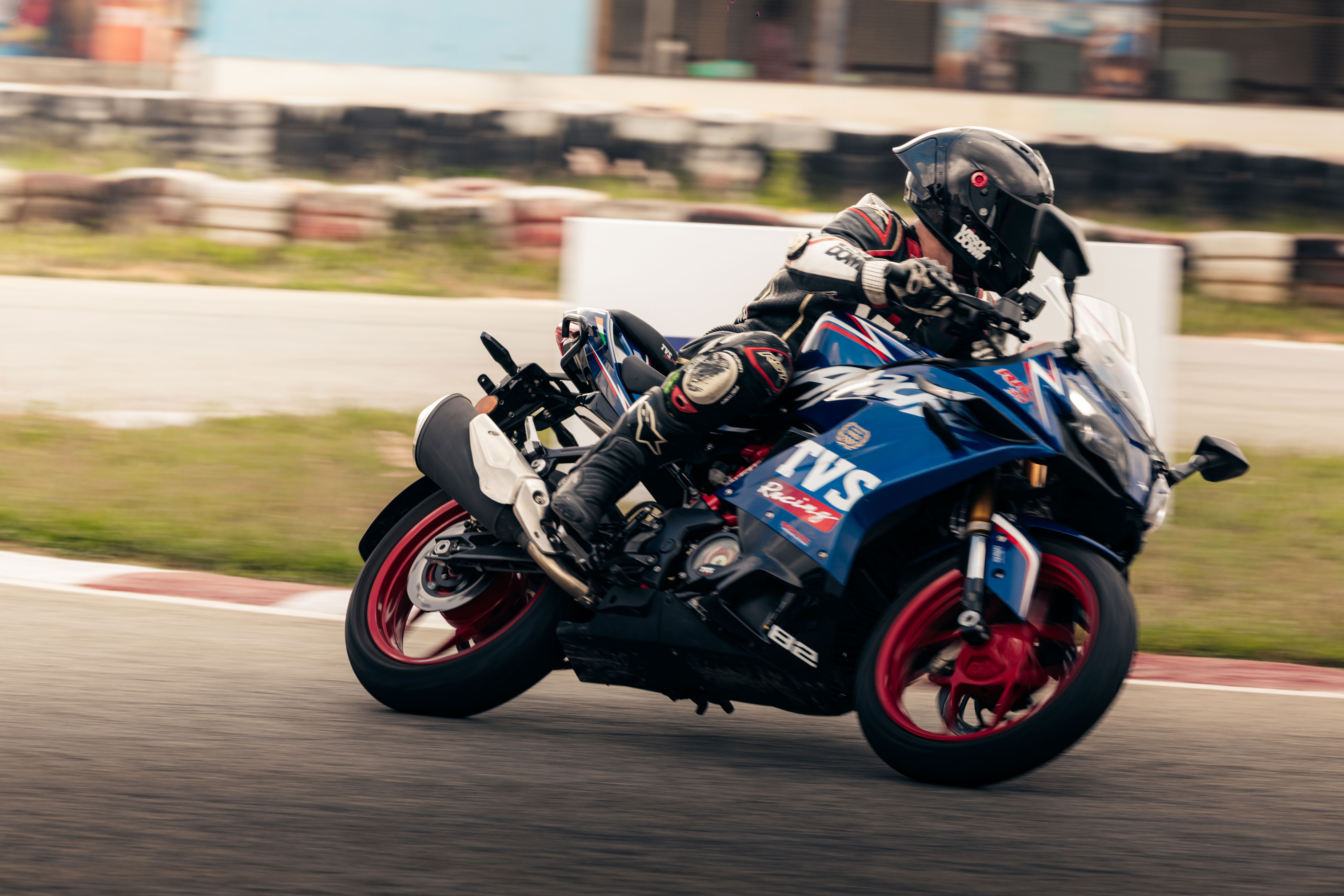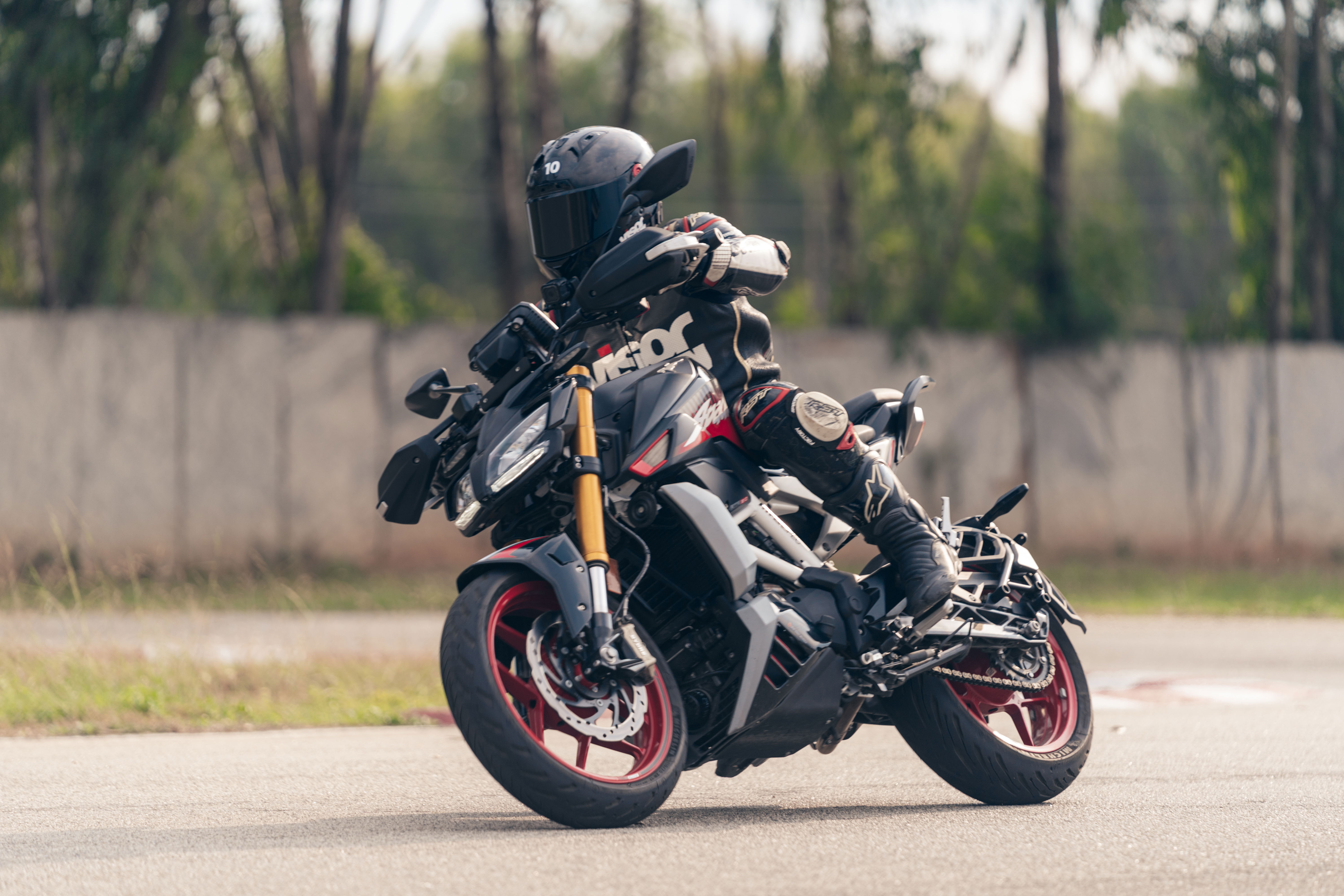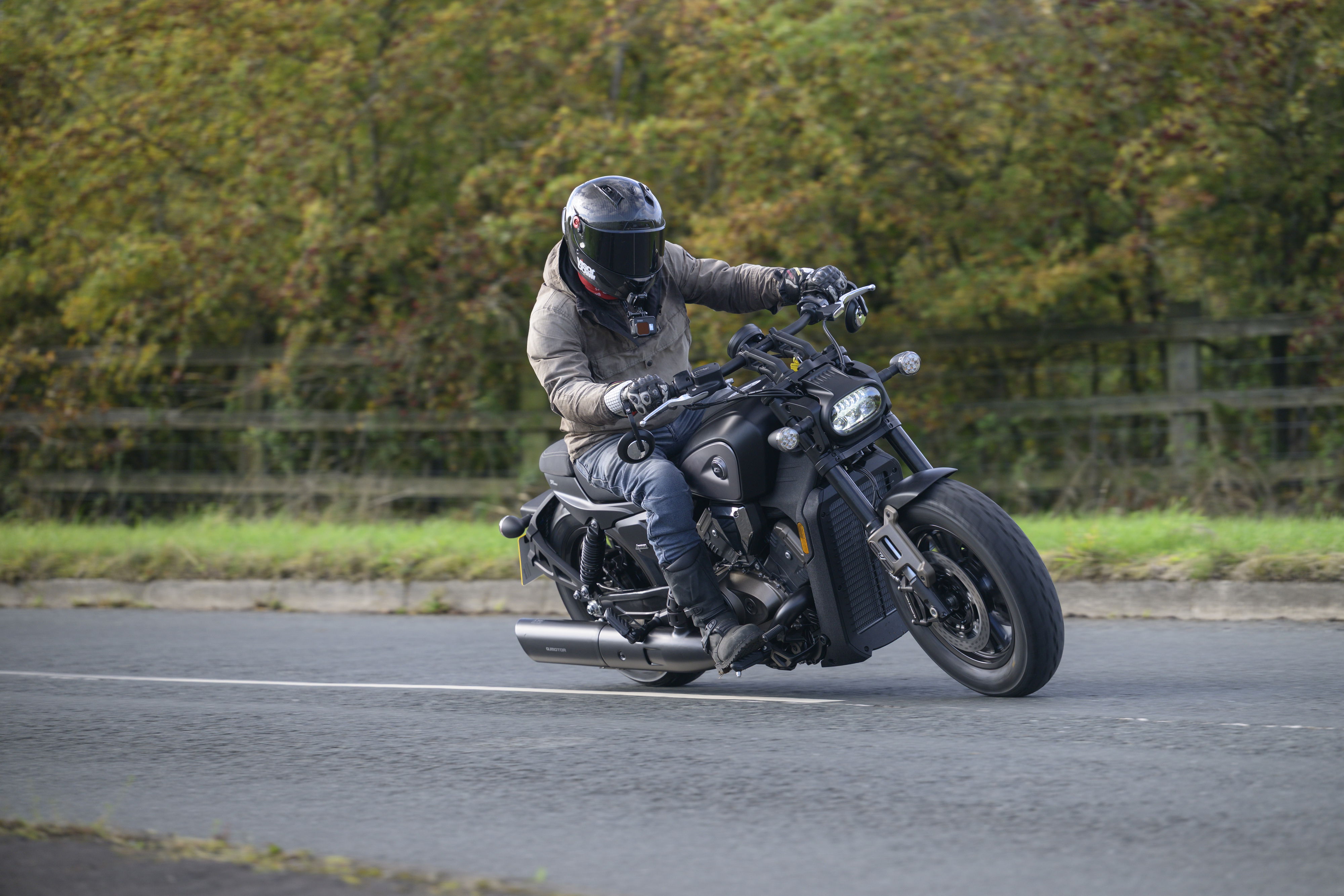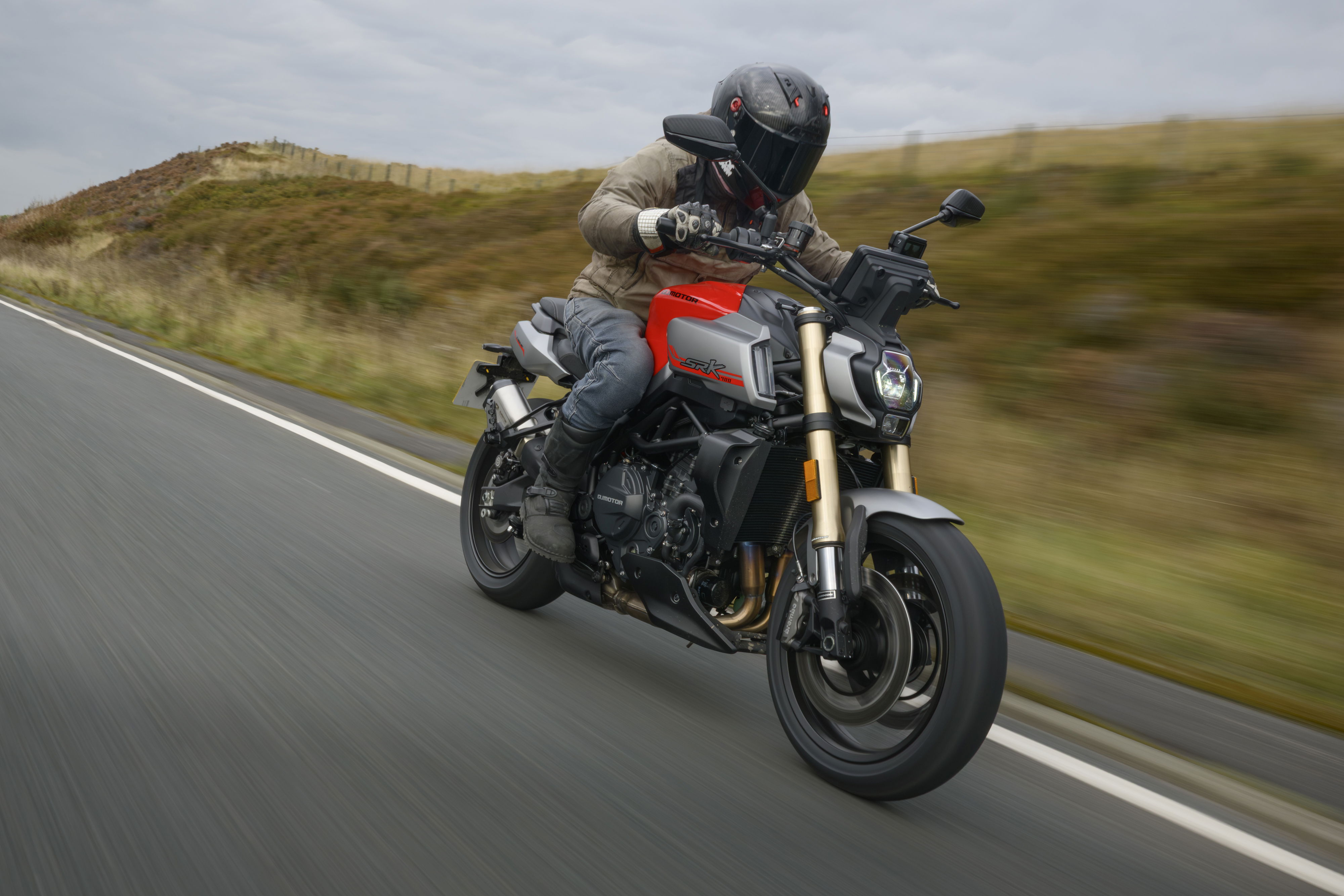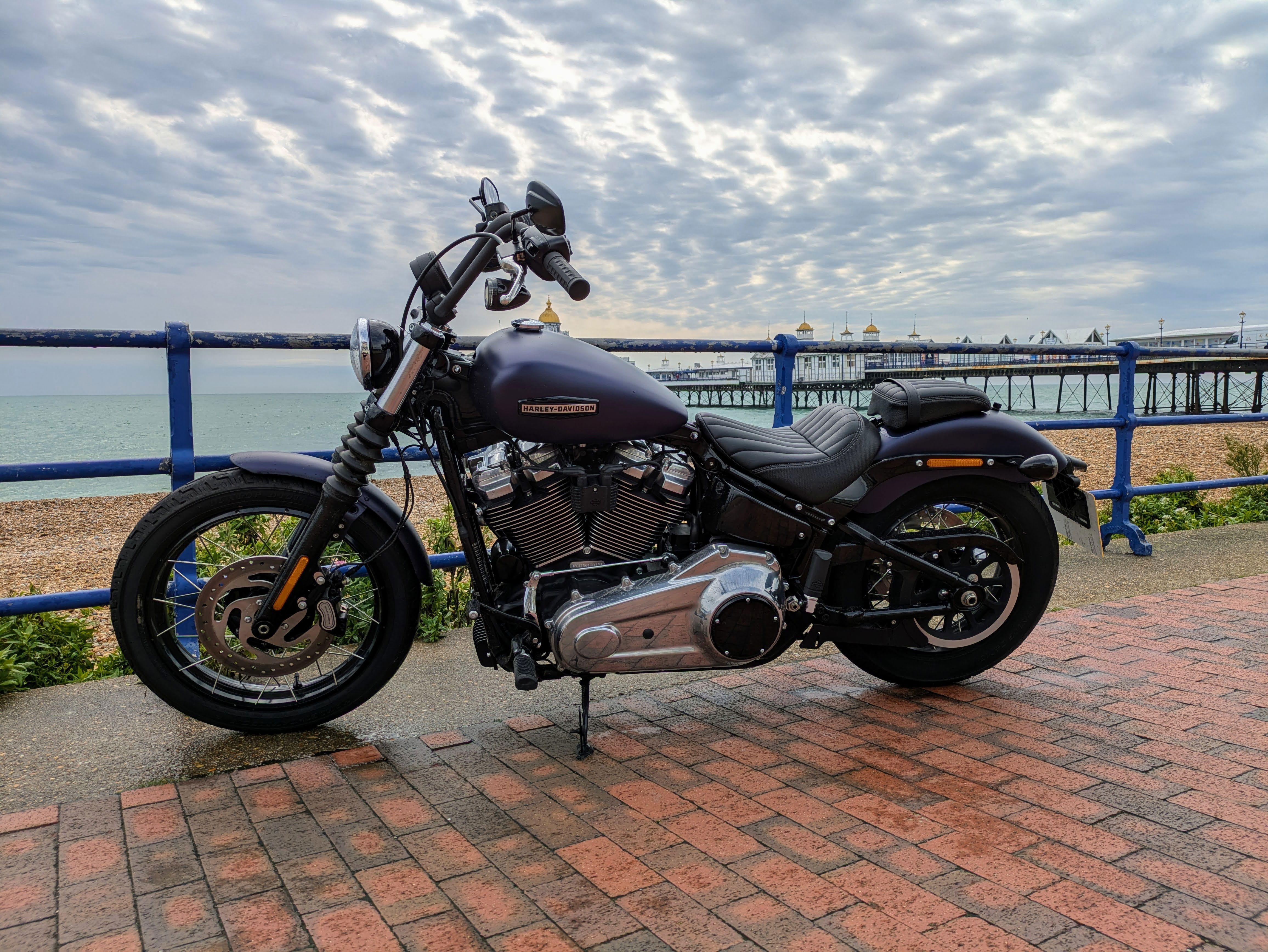Yamaha Tracer 7 and Tracer 7 GT Review: Yamaha’s Mid-Weight Finally Comes of Age
For 2025, the Yamaha Tracer 7 receives its most comprehensive update since its launch, with a revised chassis, more tech and new styling

* The braking feel also improved
* Excellent fuel range
* Slight vibes right at the top of the revs
* A Q/S on the GT would be nice
With nearly a decade of production behind it, the Yamaha Tracer 7 has become a mainstay in the Iwata brand’s lineup, and in 2025, the model receives its most comprehensive update since launch.
Two more distinct versions of the bike are now available: the stock Tracer 7 and Tracer 7 GT. To find out how they both handled, I jetted off to Portugal for a 190-mile test, jumping from one bike to the other, riding in the mountains around the Douro Valley.
What’s new with the 2025 Yamaha Tracer 7
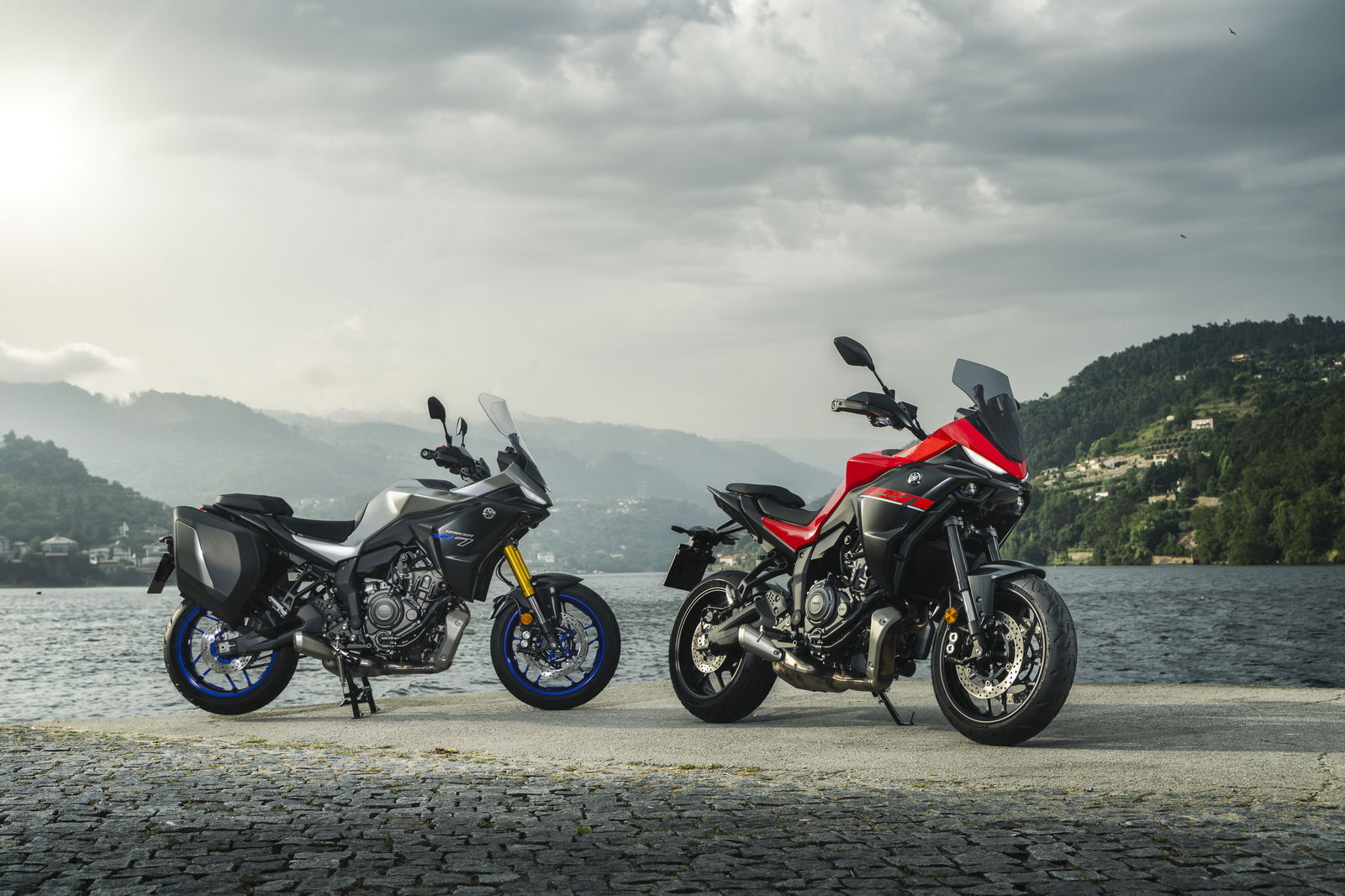
The Tracer 7 had a visual and technological update in 2020, with a revision to the suspension, too. This update, though, is much more thorough. The most obvious change is the styling, which maintains the look and feel of the previous generation Tracer, but adds in a few more curves, and carries the painted panels on through the bodyline of the bike. In the flesh, it is a more attractive bike, looking a bit more grown-up than the previous model.
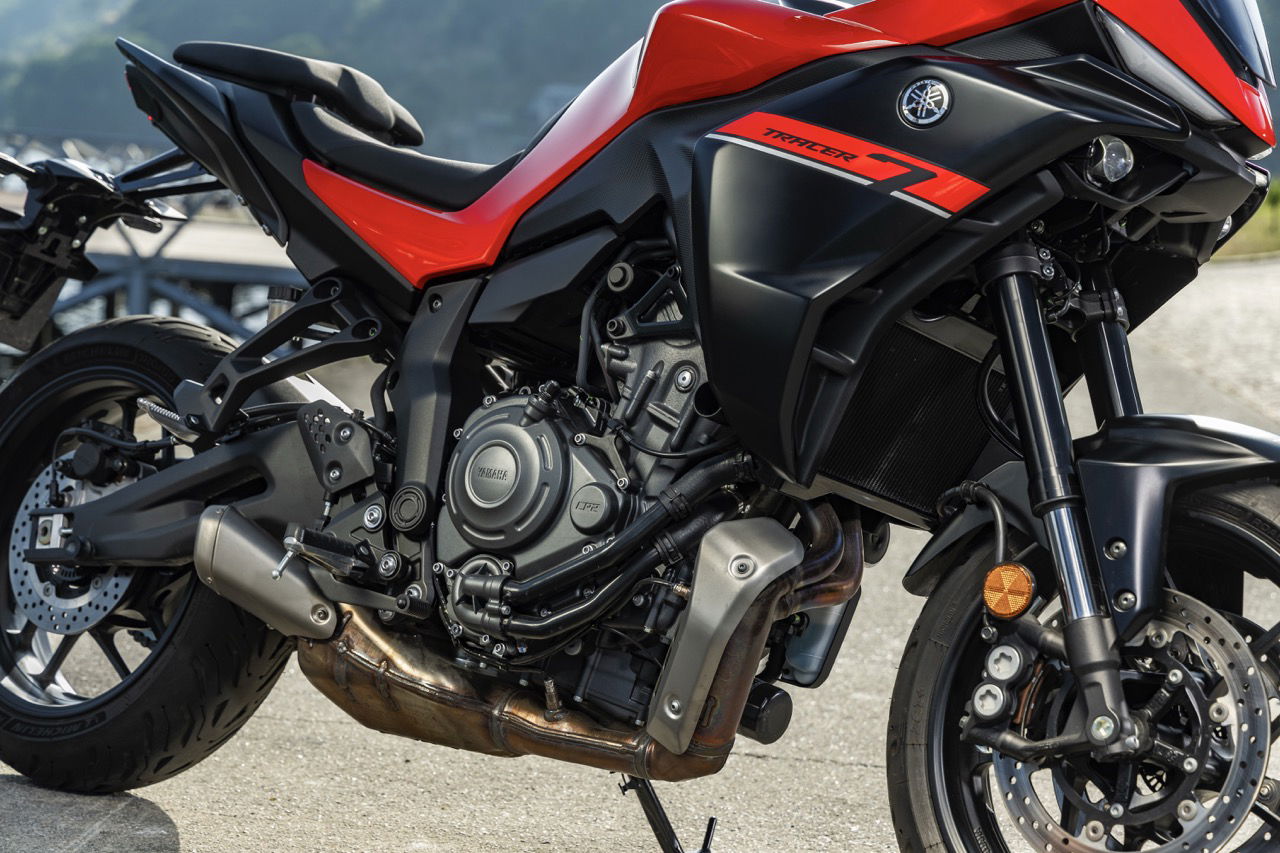
The next big change is the front suspension, which has (finally) switched over to proper USD forks. The 41mm KYB items offer 18 clicks of rebound damping. It also means the Tracer gains a set of radially mounted front brakes, with the familiar-looking Advics four-pot calipers working alongside 298mm discs. ABS is still a two-channel system, with cornering ABS yet to arrive on any CP2 (crossplane two-cylinder engine) model.

Another change to the chassis is one you won’t see, as the frame of the bike has been completely overhauled. It’s now stiffer than before, with lateral rigidity increased by 13 per cent. Yamaha also stated that every frame element and tube has been revised, thickened or tweaked in some way - aside from the headstock. In total, the frame weighs in at 15.3kg, only 500g heavier than the MT-07’s frame, which Yamaha puts down to the beefier subframe being to take two people plus luggage.
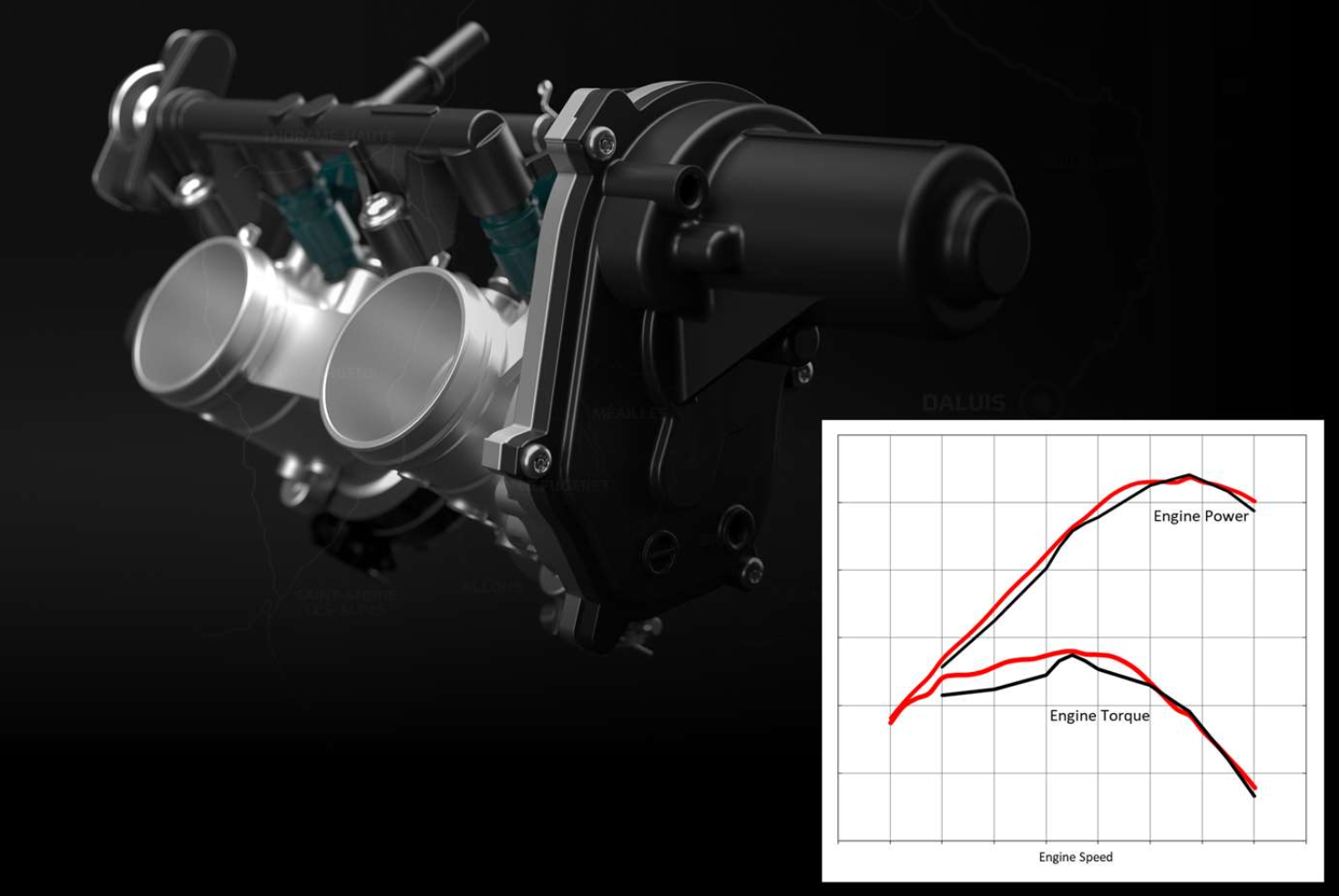
The new bike also gains a Ride by Wire (RBW) throttle system, which opens up riding modes on the model for the first time. You’ve got three to pick from: Road, Sport, and Custom, the latter of which you can set up as your default rain mode (or wheelie mode…) if you wish. You have three power modes to pick from, and two traction control settings with the option to turn that off.

The engine has obviously had some Euro5+ tweaks - hence the RBW - although performance remains pretty much as before. You’re getting a claimed 72.3bhp at 8,750rpm and 50lb ft at 6,500rpm. Yamaha is also claiming it to be a frugal bike, with a claimed tank range from the new, slightly larger 18-litre tank of 190 miles.
From there, the changes are smaller, with things like tooth revisions in the gearbox for slicker shifts, and clutch changes to make lighter work of town riding. It also has revised LED lighting, DRLs, self-cancelling indicators and emergency brake lights which flash under hard braking. Both bikes also gain an adjustable screen.
Price, colours, availability

The standard 2025 Tracer 7 comes in at £8,804 and can be had on a PCP for as little as £95.99 per month with a £2,500 deposit. There’s a red and black bike available for it, and bikes will be in dealers in July. The 2025 Tracer 7 GT comes in at £10,104 (+£1,300 over the stock bike) and can be bought on a PCP for £115.04 per month based on a £2,750 deposit. The GT comes in the very attractive Icon Performance colour scheme as well as a stealthy matt finished Tech Black option with gold decals.
What’s the difference between the two

The bikes are easily defined by the forks, with the GT gaining gold anodised items over the stock Tracer’s black. Internally, the forks are said to be identical. The GT also gains the 34-litre side cases (which can also be fitted to the standard bike aftermarket), and you also gain heated grips. Other additions for the GT come in the shape of a taller screen (90mm taller than stock) and a remote preload adjuster, meaning adjustments for a pillion or luggage are easy. The GT also shows some love to the pillion, with a slightly larger perch and rubber-damped pegs for them too. The GT also bags you a lovely-looking Alcantara-a-like seat, with gel inserts in the lining and more padding. This gives a seat height of 845mm compared to the stock bike’s 830mm. The final big extra the GT gets is a centre stand, which, unlike on the old Tracer 7, has been specifically designed for the bike and therefore inhibits hard cornering less.
2025 Yamaha Tracer 7 and Tracer 7 GT riding review

Let’s not mess about: Yamaha’s CP2 engine is, was, and probably will always be an absolute gem. Whether it’s in the MT-07, R7, Tenere, or Tracer, it just works. Punchy, characterful, and utterly likeable. In this latest Tracer 7, it still sings, but with a deep baritone induction growl when you really wind the throttle open. It’s not just noise for the sake of it either, as it’s more urgent in the midrange than before, thanks to added electronics.
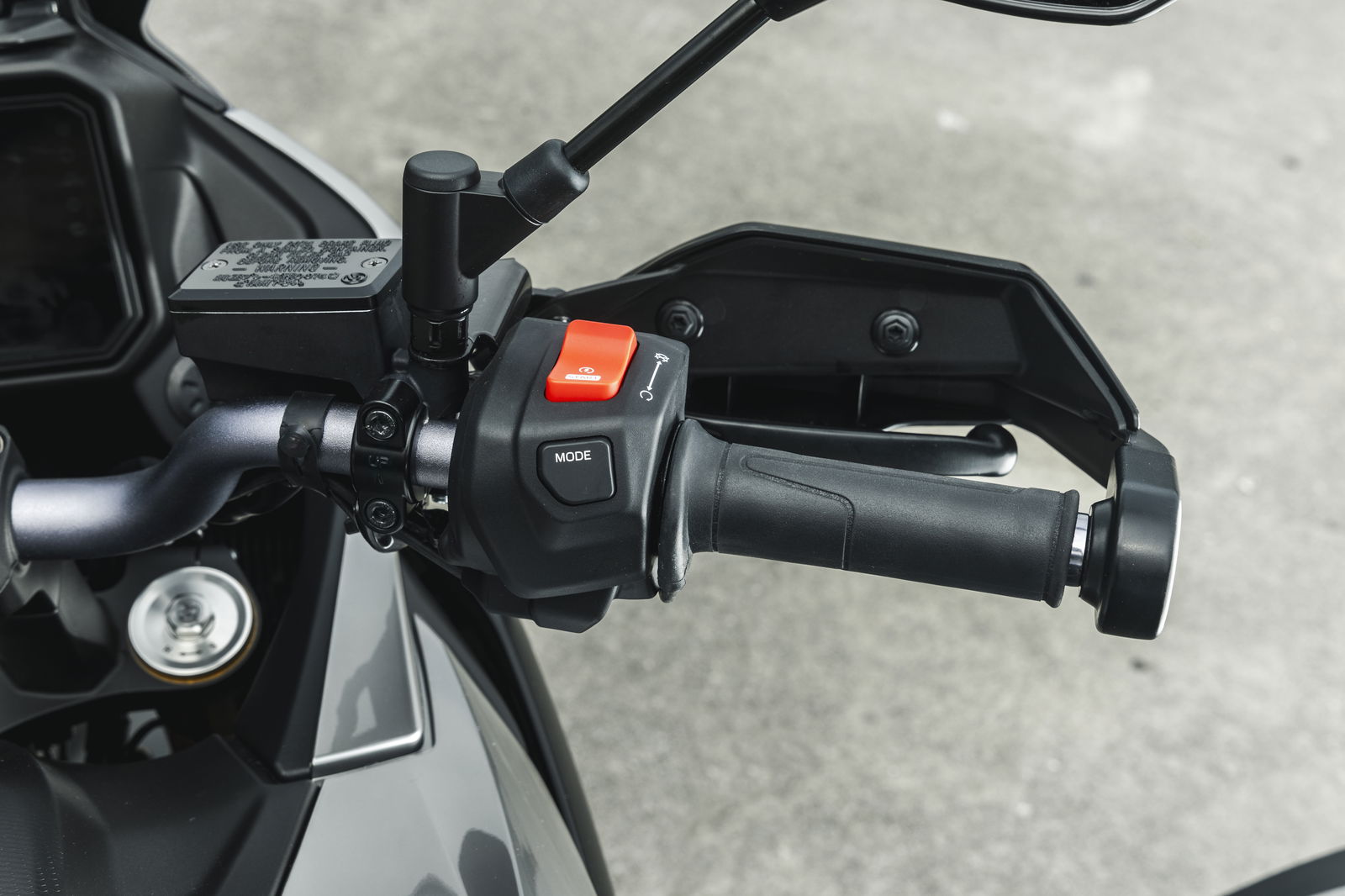
Yamaha’s new ride-by-wire throttle makes a noticeable difference to the bike. The connection between the wrist and rear wheel is tighter, cleaner, and more confidence-inspiring, when threading through traffic or rolling on for an overtake. You still have to plan those 3rd and 4th gear overtakes a touch, although with a broader spread of torque you can now be super lazy and just leave it in third on most twisty B-roads.

Gearbox tweaks seem to have done the trick, too. I spent the day clutchless shifting up and down and only had just a single false neutral - which could well have been as I snatched another gear before dropping into the next corner. Should the GT come with a quickshifter already fitted? Probably. I put the question to James McCombe, Yamaha Motor Europe’s marketing man, and he said it all comes down to price. If you want to sling the aftermarket quickshifter on the Tracer, it should be an easy enough job and the official one comes in at around £200.

While we are on the subject of the electronics, the tech fitted to the Tracer has improved massively. The new TFT is a familiar one, in that it's shared across some other models, and it's great. Easy to read and with different themes. We even got to try out the on-screen navigation. While it’s not full-screen mapping, it is enough to clearly see where you are going and how far it is to your next junction. Should you prefer a bar-mounted phone for mapping, a USB-C socket is nestled within easy reach on the left of the TFT.
Handling & Chassis
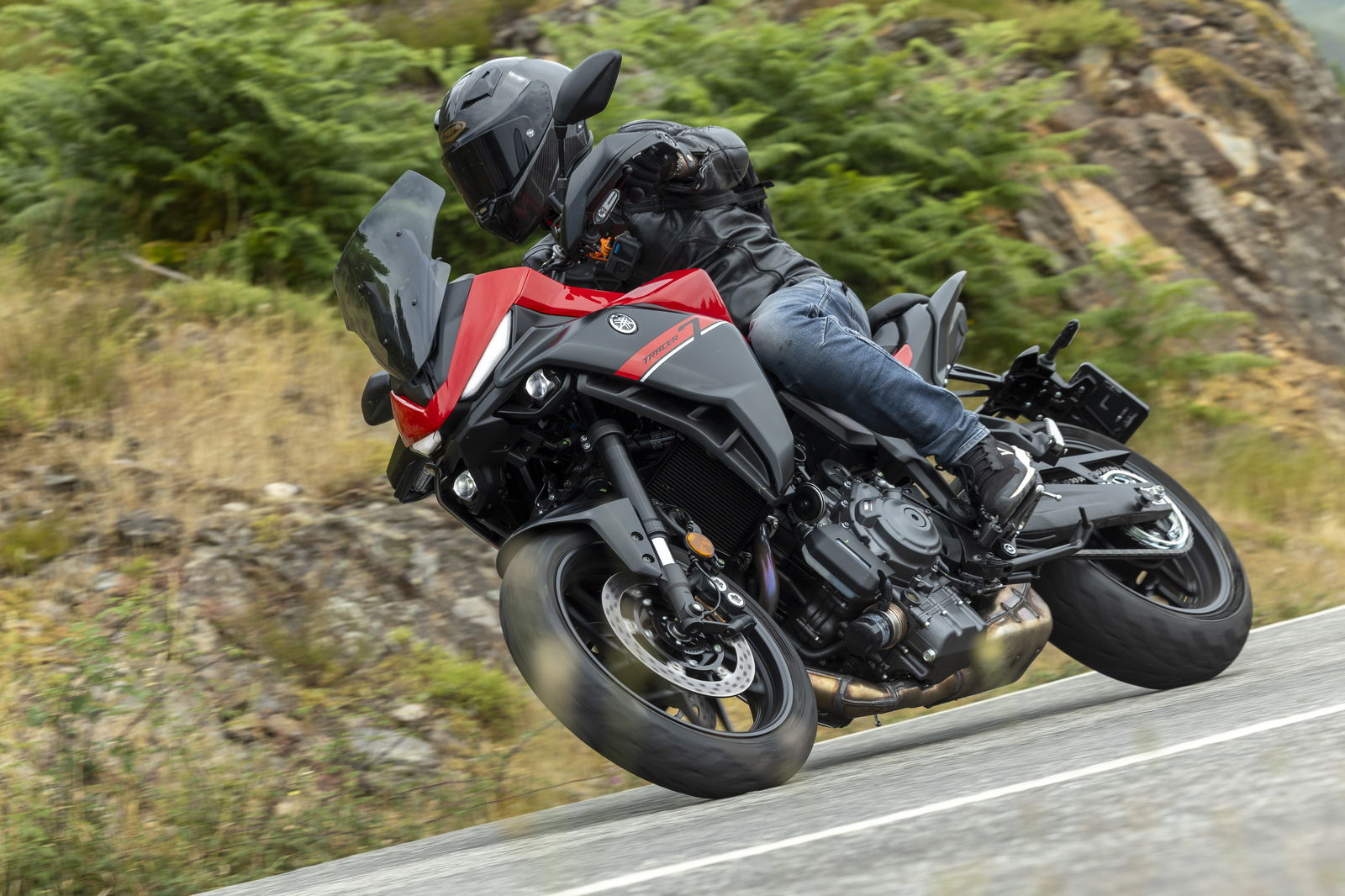
The engine is a peach, and we always knew that, but the big news for 2025, is the chassis. This is where the new Tracer 7 takes its biggest step forward. Now the damping is more composed, well-controlled, and the bike is unflustered by mid-corner bumps. It’s noticeable how it now doesn’t fall through its stroke as much when you get on the anchors. I threw it into more than a few rutted bends today, and where the older T7 would’ve squirmed and complained, this one just dealt with it brilliantly well. The Tracer 7 made a big step forward in the handling department in 2020, and it’s done the same thing again with this latest update. Overall it feels sharper, more direct and more accurate when threading through a set of bends.

And it’s not just the suspension playing a part here. The new frame tweaks also help to make this feel like a proper midweight sports tourer now, not just a commuter bike playing dress-up. There’s a level of maturity and poise with the new Tracer 7 that simply wasn’t present in earlier versions.

Front-end braking confidence has improved, too, and while the braking power hasn’t drastically changed, the feel has. It’s a bit more progressive, a bit more reassuring, and the two-channel ABS ticks along quietly in the background. Should it have cornering ABS? Probably not. There isn’t much at this space in the segment that does. Besides, it’s not too intrusive when it does trigger, or at least it wasn’t on the bone-dry roads we tested it on. I’d have put the question to Mr McCombe again, but I think I already know his answer.
Which one is better
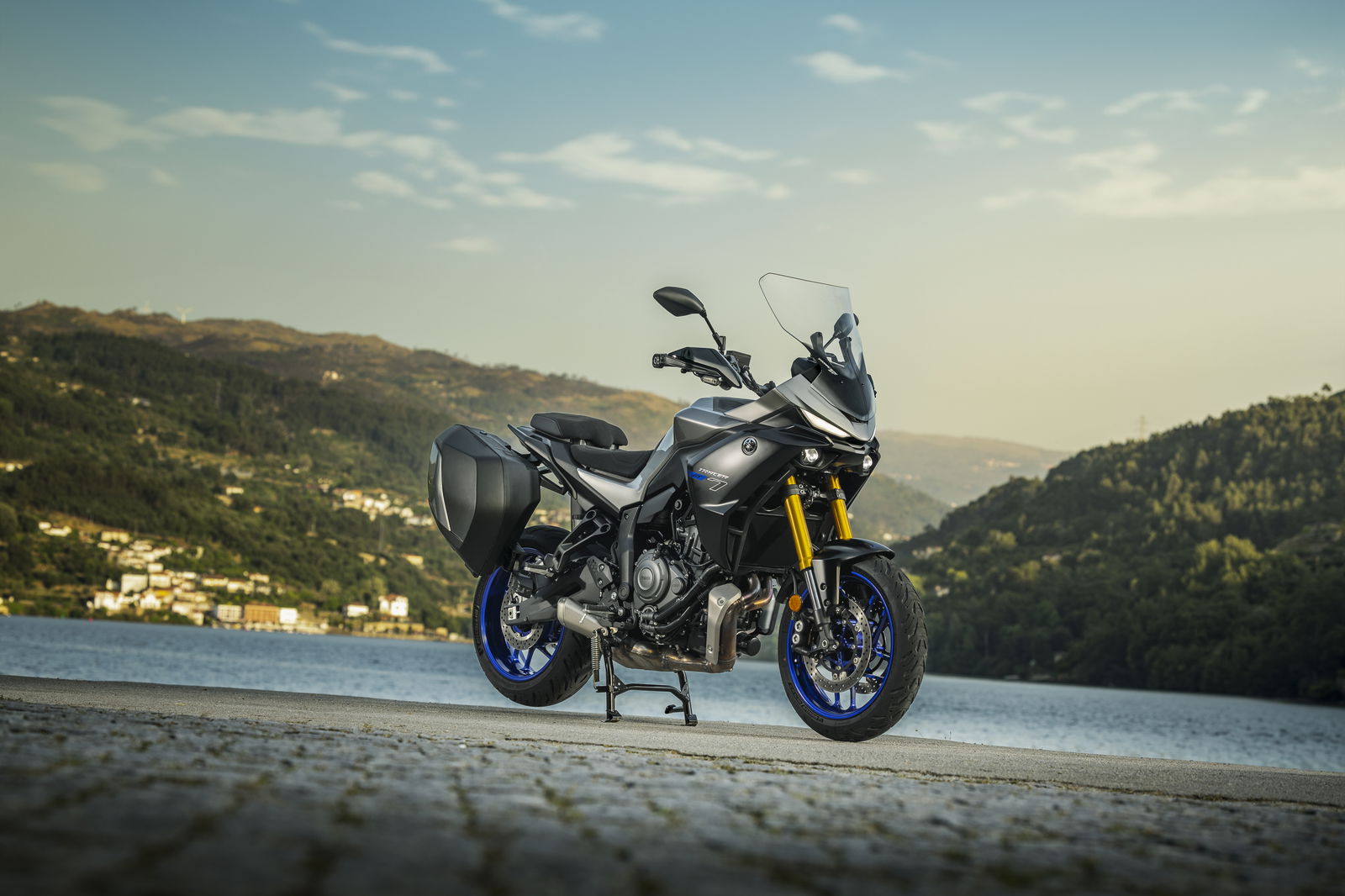
Yamaha says the chassis is the same across the standard Tracer and the GT, and technically, it is. But back-to-back at the photo stop, I’d swear there’s something just a bit more direct about the base model. Maybe it’s the 7kg weight difference or where the weight is carried. Even Yamaha’s engineers were protesting that the bikes were identical, but when cornering hard you could feel the difference.
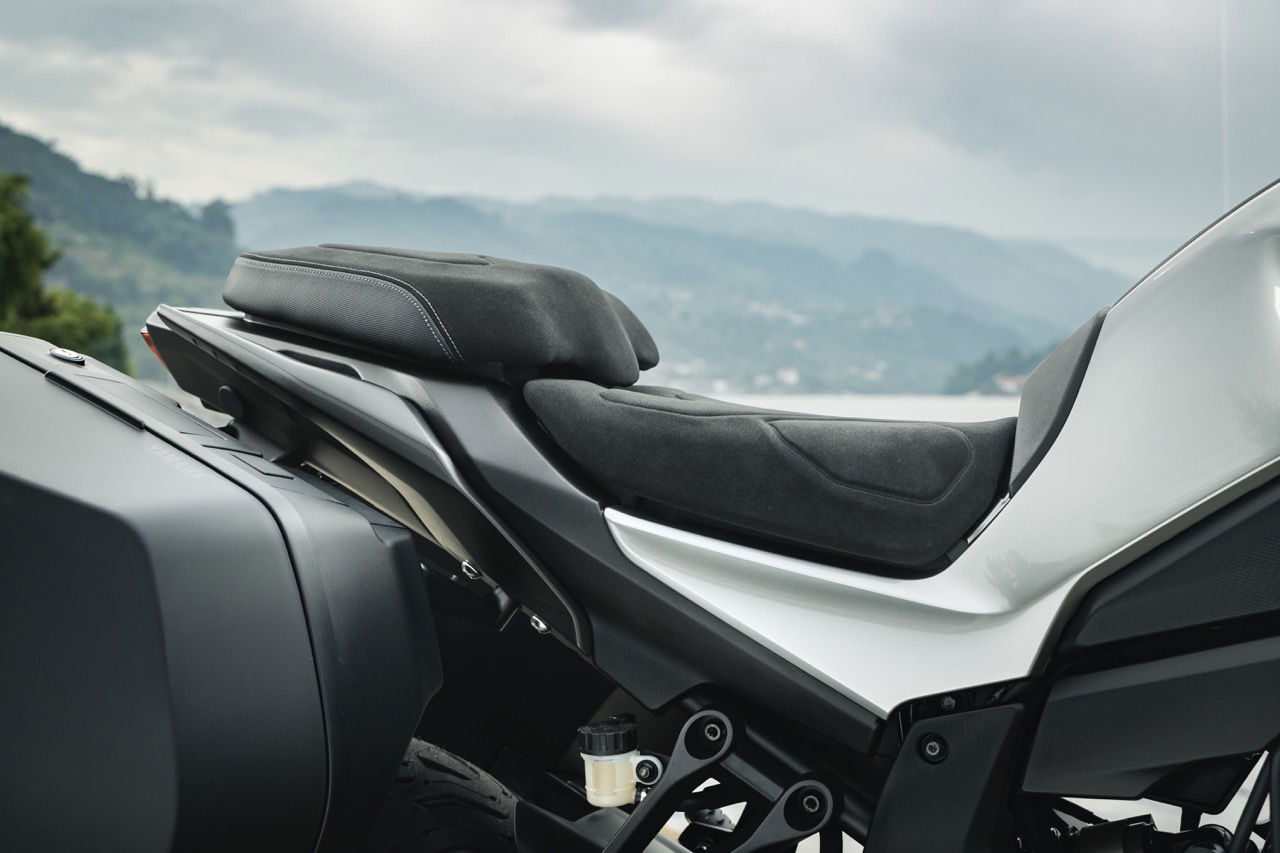
Even taking that into account, if I had to choose one, I’d take the GT. For just £1,300 more, you get integrated yet removable panniers, more seat comfort, and arguably better looks as I think the two colour schemes on the GT are fantastic. That makes it a more rounded package for touring, commuting, and everything in between. If Yamaha just threw in a quickshifter as standard, it’d be an absolute no-brainer.
Any Niggles?
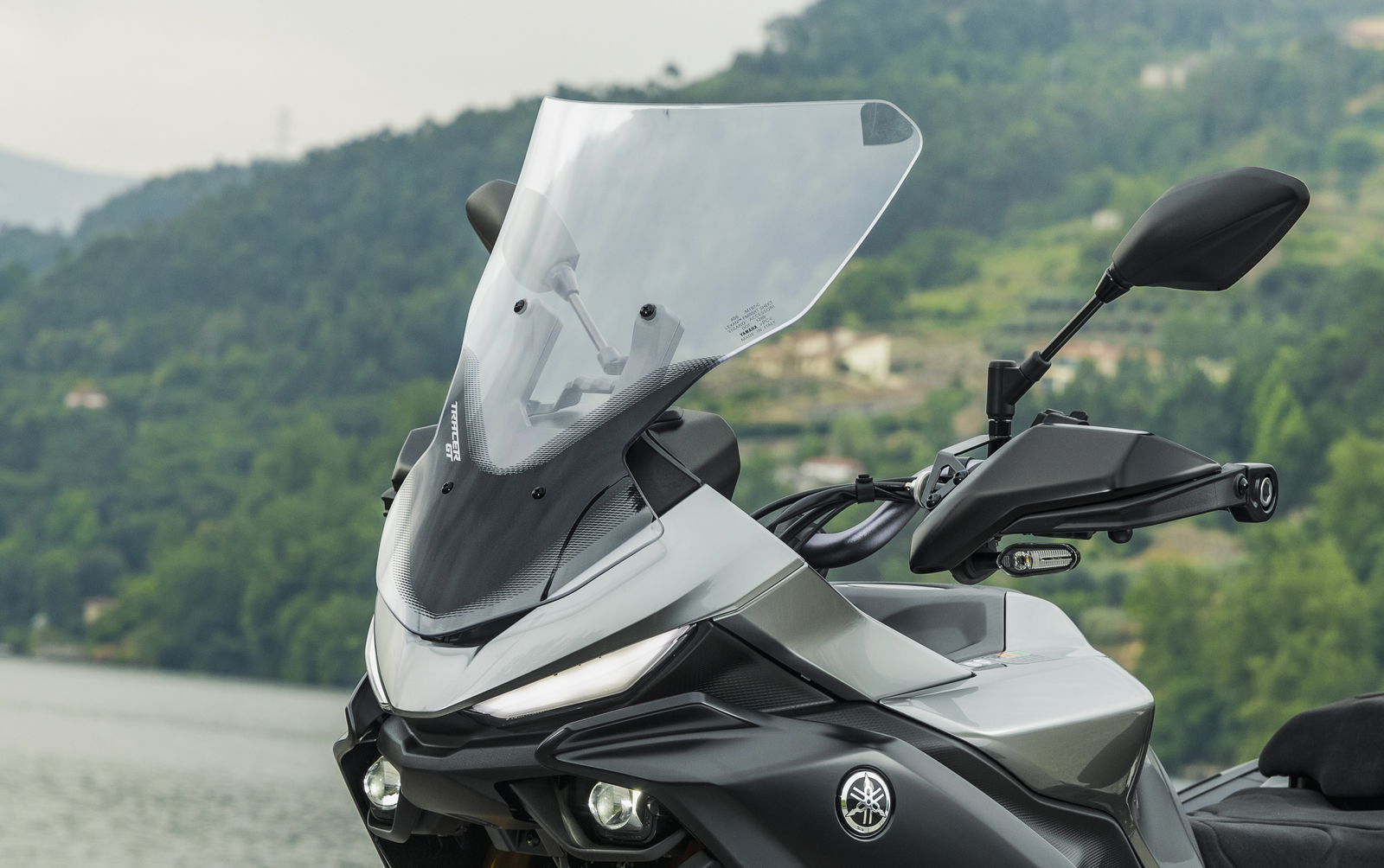
There are a couple of drawbacks, though, and one of them relates to the GT. The GT’s screen may be taller by 90mm, but oddly, it doesn’t work as well as the standard bike’s shorter one - which is almost a flyscreen when on its lowest setting. On the GT, even at its highest setting, there’s noticeable turbulence. I had to duck below it to get in clean air. The short screen on the regular Tracer 7, though, was spot on. On that, with the screen on the lowest setting, the turbulence was hitting my shoulders and not my head. I’d much rather have that on a long motorway cruise. Keep in mind, of course, that I’m 5-foot-7. Taller (or shorter) riders may have different experiences.
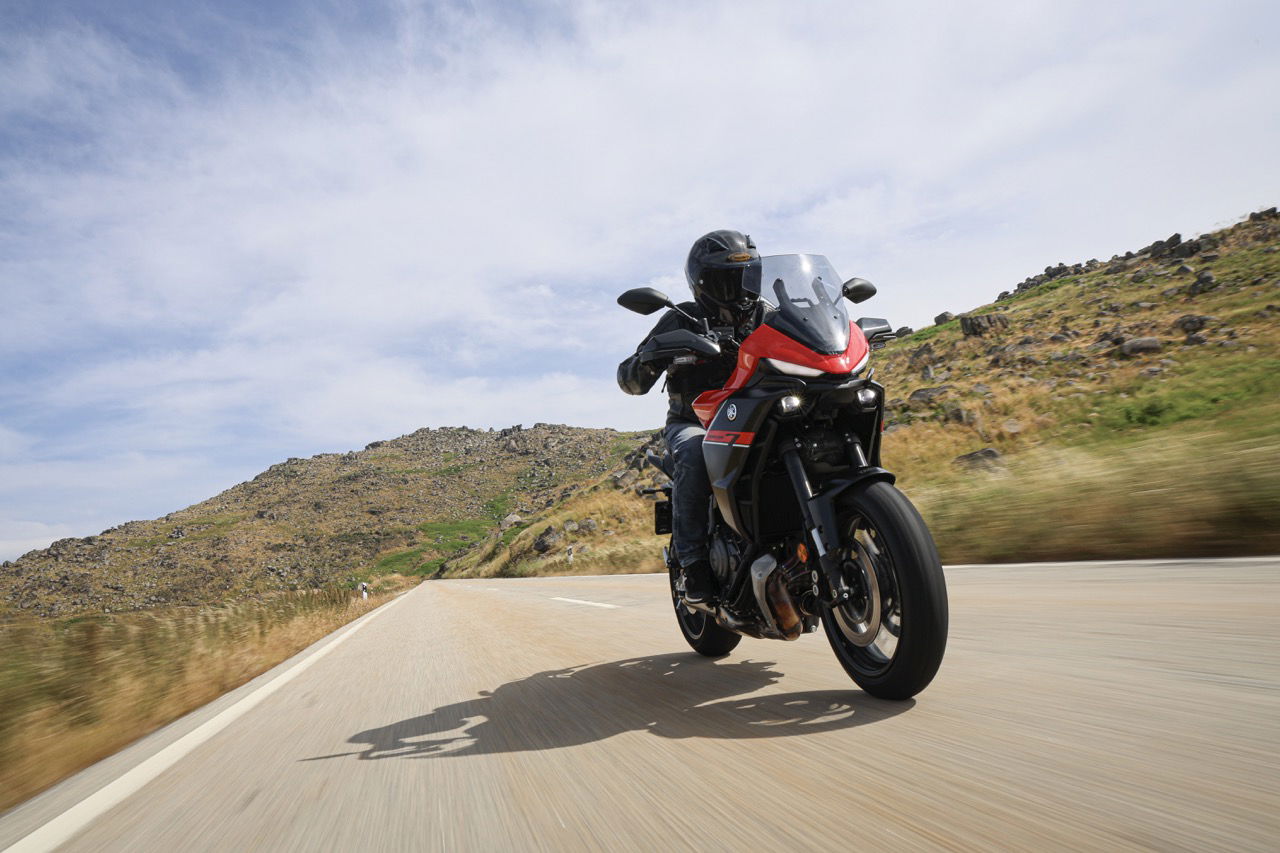
There’s also a faint vibration through the fuel tank at the very top end of the revs on both bikes. It doesn’t come through the bars or rubber-damped pegs, and it’s not there at motorway cruising speeds. But if you give it the beans, you’ll feel it through the bodywork as the rev-counter nears the redline. It’s not a deal-breaker, although something to note.
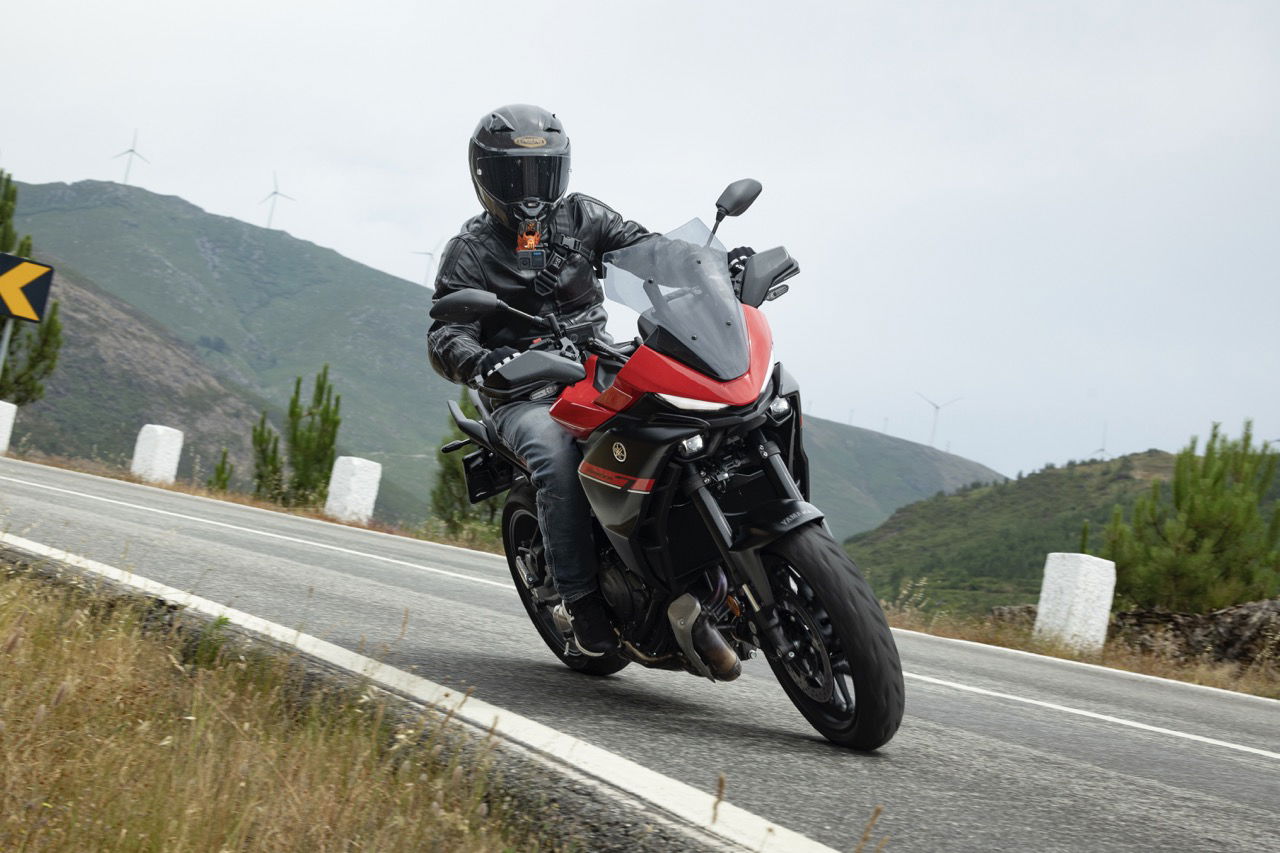
One niggle I definitely don’t have is around Yamaha’s lofty maximum range claim. They said 190 miles in WMTC (World Motorcycle Test Cycle) conditions. We rode it today in a completely un-WMTC manner, and after hammering up mountain passes and using every rev available for six hours, I managed 180 miles before giving it a drink.
Verdict

The 2025 Tracer 7 has grown up. It looks better, feels more composed, and finally handles as well as that sublime little CP2 engine deserves. It’s more than just a solid engine in an average chassis now. This is a proper sports tourer with balance, poise, polish, and all the tech you’d expect.
Where previous generations felt like commuter bikes in sport-touring clothing, this one finally lives up to its own image. It's still decent value, still approachable, but now it's a bike you’d happily take the long way home on, or better yet, all the way across Europe.
The CP2 is no longer carrying the whole show. The chassis has finally joined the party.
2025 Yamaha Tracer 7 and Tracer 7 GT specs
Engine | 689cc, crossplane parallel twin-cylinder |
Power | 72.3bhp at 8,750 |
Torque | 50lb ft at 6,500 |
Suspension (f) | 41mm KYB USD fork - rebound damping adjustment |
Suspension (r) | Rear mono-shock w/linkage (remote preload adj - GT) |
Brakes (f) | Advics 4-piston calipers, 298mm discs - 130mm travel |
Brake (r) | Single piston sliding caliper, 245mm disc - 139mm travel |
ABS | Two-channel |
Seat height | Tracer 7 830mm - Tracer 7 GT 845mm |
Fuel capacity / range | 18 litre / 180 miles (range confirmed on test) |
Wet weight | Tracer 7 203kg - Tracer 7 GT 212kg |
Centre stand | GT only (accsesory on standard Tracer 7) |
Images and video: Ant Productions
You can find out more about the 2025 Yamaha Tracer 7 and Tracer 7 GT on the official website.
Find the latest motorcycle reviews on Visordown.com
